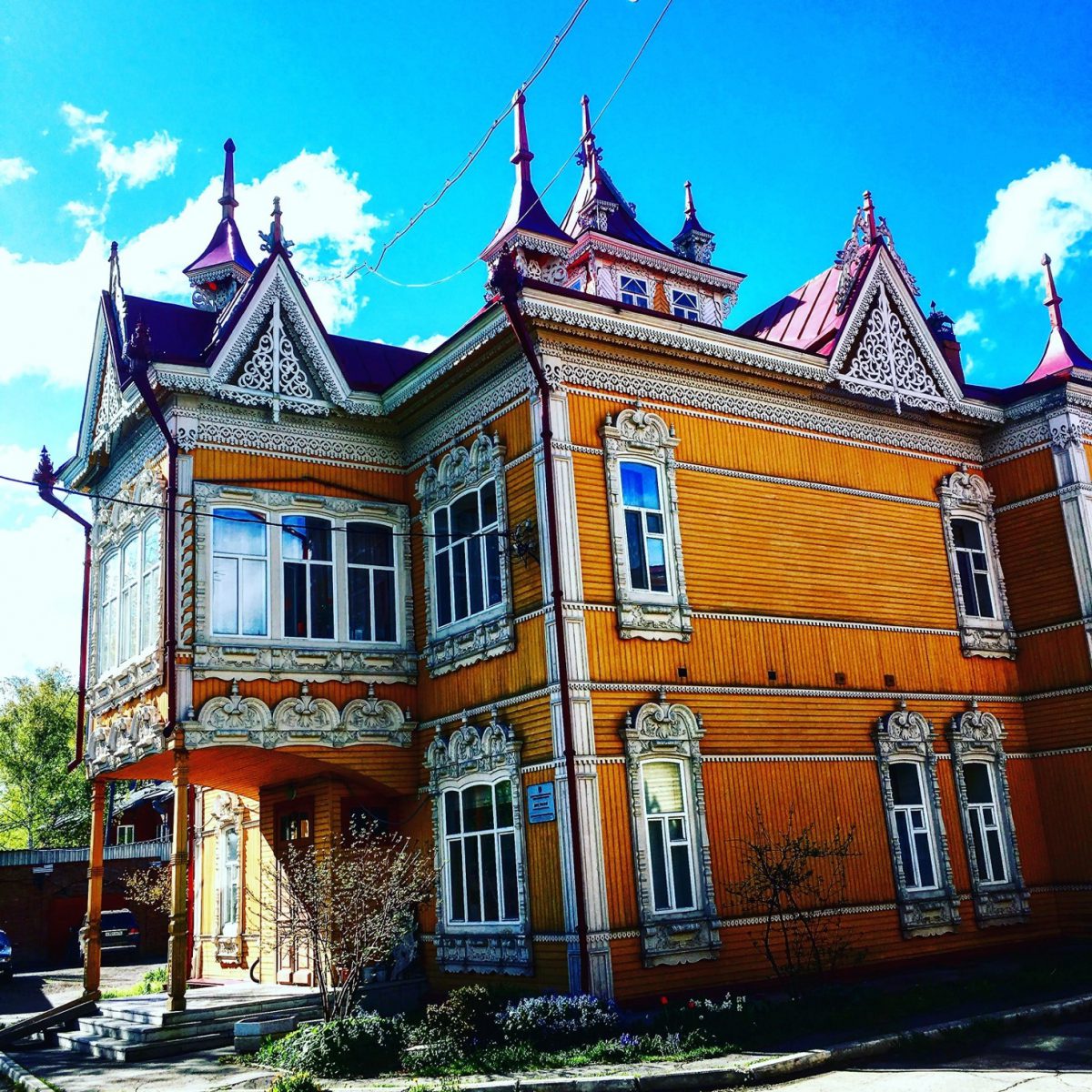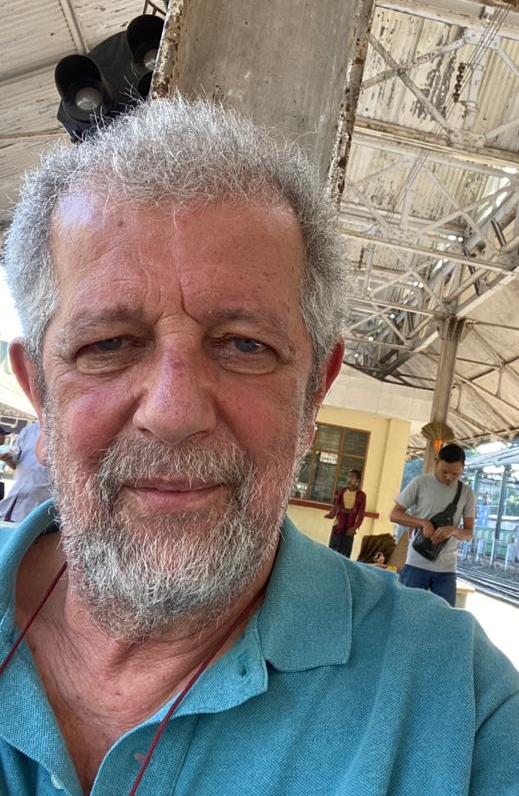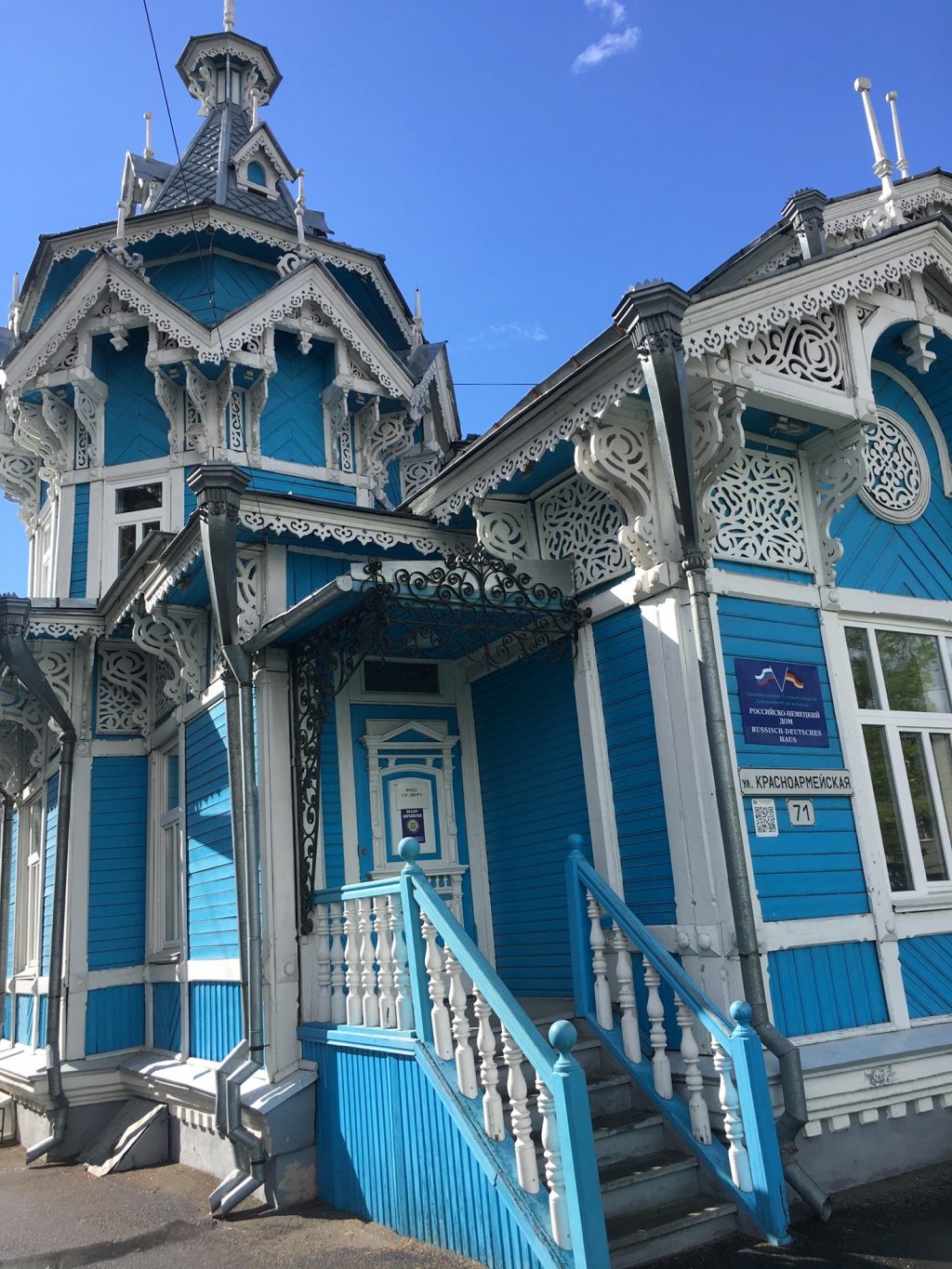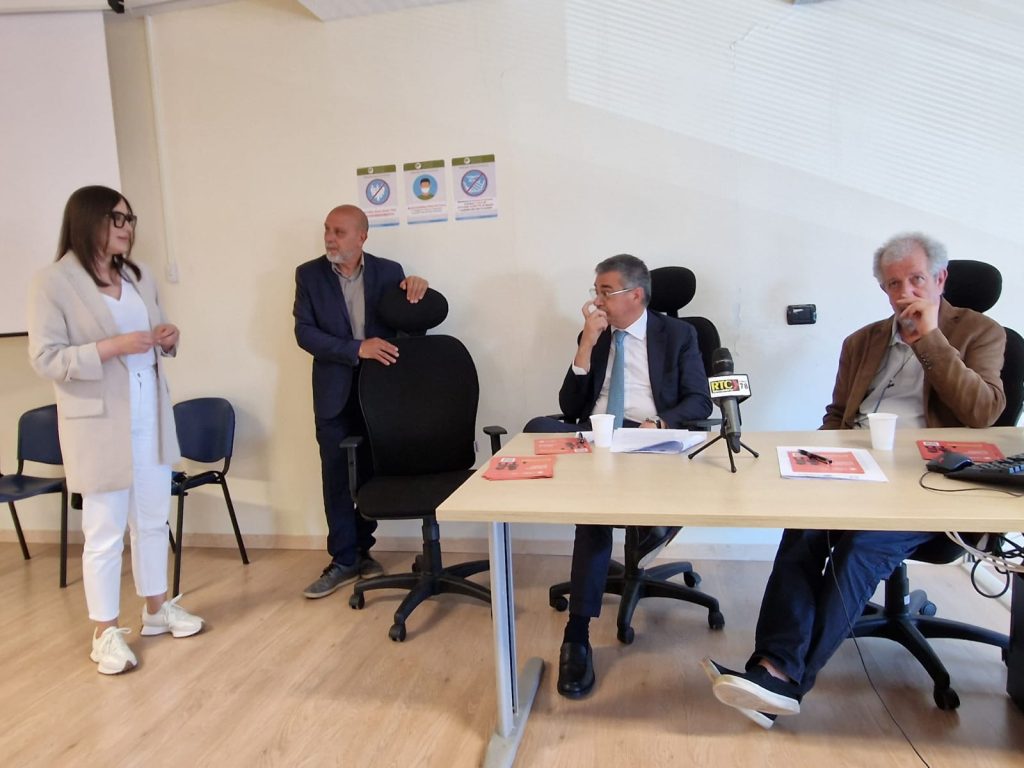by Cleto Corposanto, exclusive for The diagonales
THE HOUSES OF TOMSK
I took these two photos in May 2019 in Tomsk, when I received an invitation to participate to the international Social Sciences & Health Innovations conference, organized by the local State University in collaboration with a couple of other European universities, which gave me the possibility for the first time to visit Russia, and in particular Siberia.
Imagined from our latitudes, the huge region at the center of the immense Russian expanse could remind us of boundless expanses and frozen lands: in reality I found a beautiful city of about half a million inhabitants (of which almost a hundred thousand are students), alive, which in a warm May offered itself perhaps at its best to the many visitors who came.
Tomsk is a very important cultural center, with many universities that make the city swarm with young students eager to store the heat before the harsh Siberian winter.
The city has always had a vocation for inclusion and confrontation, even from a religious point of view. In addition to the Ordodox rite, in fact, Tomsk already in 1910 had a Catholic church, two mosques, a Lutheran church, an Old Believer ordox church and one of the most beautiful synagogues in Russia. In 1911, the Neo-Byzantine Cathedral of Saints Peter and Paul was built in the northern part of the city, which remained open during most of the Soviet era.
But the most characteristic part of the city’s architectural heritage is certainly found in the characteristic neighborhoods of meticulously decorated wooden houses; the “laces” of the wooden architectural decorations of Tomsk, especially the edges of the windows, called nalichniki, are wonderful architectural examples for the details and for the state of conservation.
Many of these houses were built for merchants who lived in the Tatar quarter, the same quarter that now houses the restored White Mosque. Wandering around the streets of Tomsk and admiring these houses is one of the most beautiful experiences I had on my first trip to Siberia. In this city which, although not on the most fascinating railway line in the world, the Trans-Siberian, has managed with a mix of cultures and an extraordinary openness to science and change, to become an absolutely sought-after and interesting place.


LE CASE DI TOMSK
Ho scattato queste due foto nel maggio dello scorso anno a Tomsk, quando ho ricevuto un invito per partecipare al convegno internazionale Social Sciences & Health Innovations, organizzato dalla locale Università di Stato in collaborazione con un paio di altri atenei europei, che mi ha dato la possibilità per la prima volta di visitare la Russia, e in particolare la Siberia.
Immaginata dalle nostre latitudini, l’enorme regione al centro dell’immensa distesa russa ci potrebbe far venire in mente distese sconfinate e lande ghiacciate: in realtà ho trovato una città bellissima di circa mezzo milione di abitanti (dei quali quasi centomila sono studenti), viva, che in un tiepido maggio si è offerta forse al suo meglio ai tanti visitatori convenuti.
Tomsk è un centro culturale molto importante, con moltissime sedi universitarie che fanno si che la città pulluli di giovani studenti desiderosi di immagazzinare il caldo prima dei rigidi inverni siberiani. La città ha sempre avuto una vocazione all’inclusione e al confronto, anche dal punto di vista religioso. Oltre al rito ordodosso, infatti, Tomsk già nel 1910 aveva una chiesa cattolica, due moschee, una chiesa luterana, una chiesa ordossa Vecchio Credente e una fra le più belle sinagoghe di tutta la Russia. Nel 1911, nella zona settentrionale della città venne costruita la Cattedrale neo-bizantina dei Santi Pietro e Paolo, che rimase aperta durante la maggior parte dell’epoca sovietica.
Ma la parte più caratteristica dell’eredità architettonica della città si trova certamente nei quartieri caratteristici di case di legno minuziosamente decorate; i “merletti” delle decorazioni architettoniche lignee di Tomsk, in particolar modo i bordi delle finestre, detti nalichniki, sono meravigliosi esempi architettonici per i dettagli e per lo stato di conservazione. Molte di queste case furono costruite per i mercanti che vivevano nel quartiere tataro, lo stesso che oggi ospita la restaurata Moschea Bianca.
Aggirarsi fra le strade di Tomsk e ammirare queste case è una delle esperienze più belle che abbia fatto nel mio primo viaggio in Siberia. In questa città che, pur non trovandosi sulla linea ferroviaria più affascinante al mondo, la Transiberiana, è riuscita con un mix di culture e con un’apertura straordinaria alla scienza e al cambiamento, a diventare un posto assolutamente ricercato e interessante.

Cleto Corposanto, Italian, is professor of the University “Magna Graecia” of Catanzaro, South Italy. He deals with issues related to the Method research and Health/disease. He has more than 200 publications between books and scientfic articles. Former national coordinator AIS – Health and Medicine, He founded and coordinates the Degree Course in Sociology of UMG of Catanzaro.





